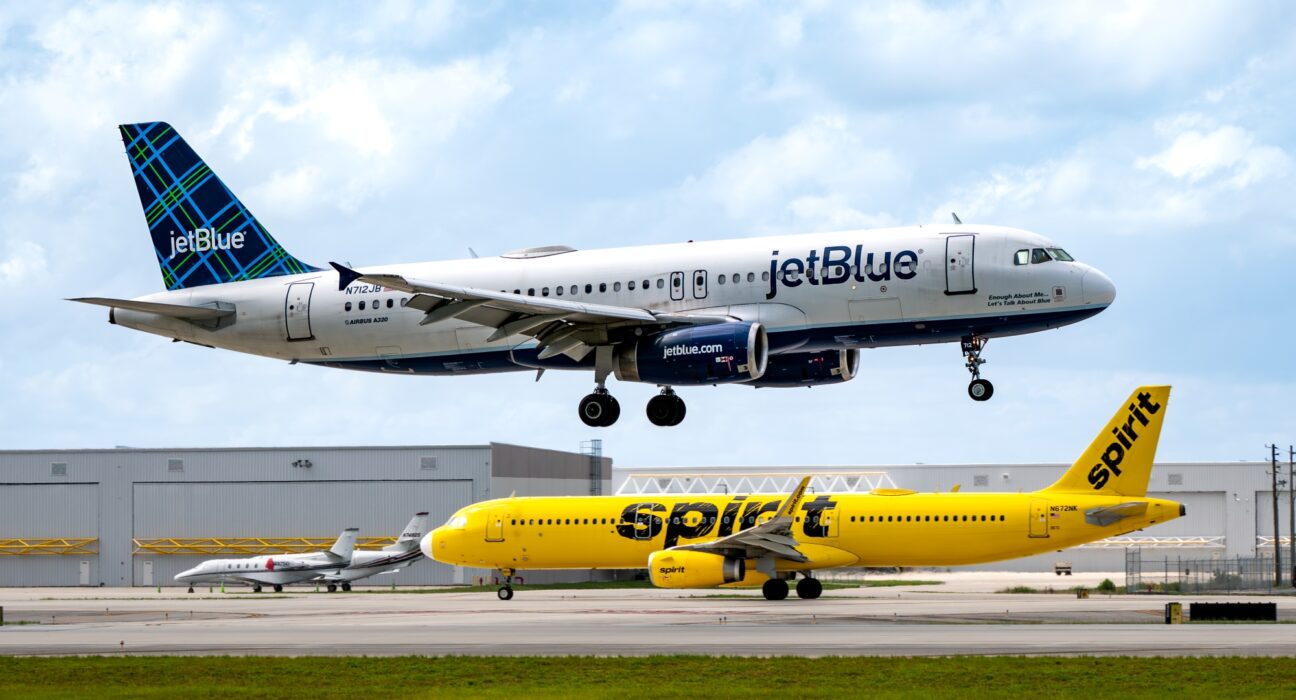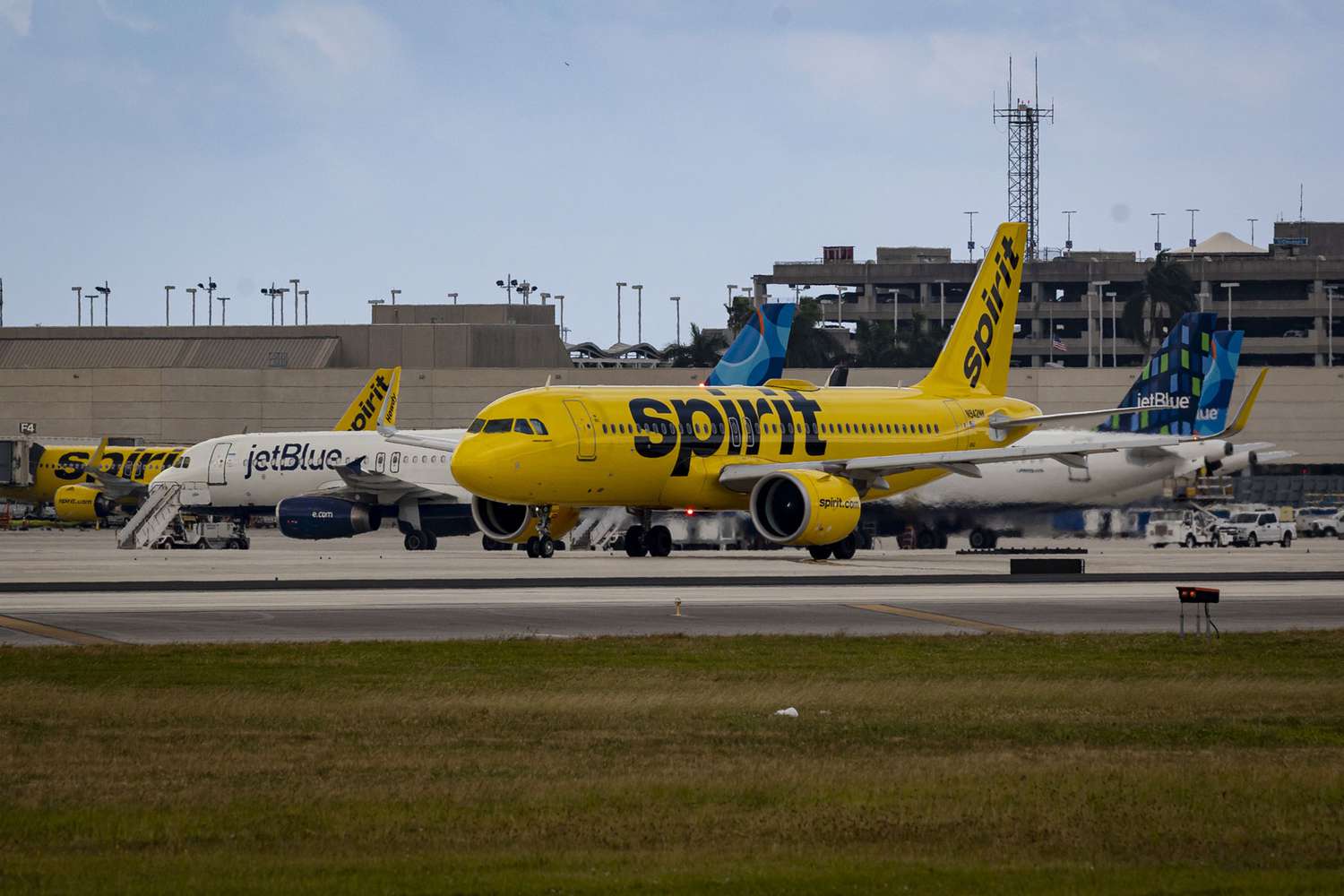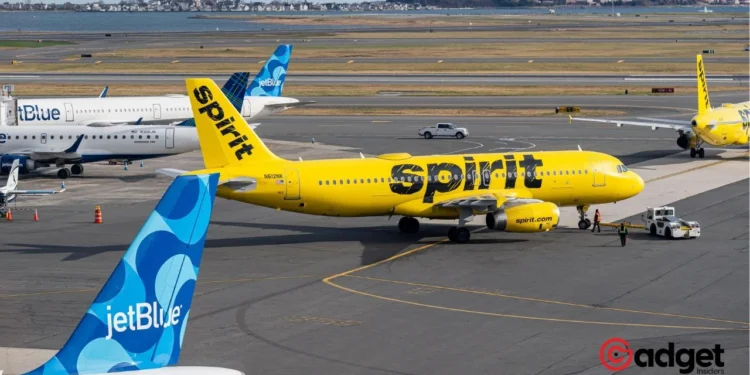In a surprising turn of events, the aviation world witnessed the dissolution of what could have been a monumental merger between JetBlue and Spirit Airlines, valued at a staggering $3.8 billion. This decision came in the wake of a federal judge’s ruling, branding the potential union as a violation of US antitrust law, a verdict that has sent ripples through the airline industry.

A Merger Grounded Before Takeoff
JetBlue’s ambitious plans to acquire Spirit Airlines hit unexpected turbulence when the US Justice Department raised concerns that the merger would lead to an increase in airfares by eliminating the budget-friendly option that the other Airlines represented.
The legal challenges culminated in a decisive blow this January when a federal judge ruled against the merger. This judgment essentially clipped the wings of the proposed union, leading to its eventual cancellation.
In an industry that thrives on competition and consumer choice, the federal court’s decision underscores the importance of maintaining a diverse market landscape. The ruling not only protects consumers from potential fare hikes but also preserves the essence of market competition.
The Aftermath: A Mutual Agreement to Part Ways
Faced with insurmountable legal and regulatory hurdles, both Airlines jointly announced their decision to abandon the merger. The fallout from this decision includes JetBlue paying Spirit a termination fee of $69 million, a costly consequence but perhaps a small price to pay for maintaining industry competition.
US airlines JetBlue Airways and Spirit Airlines today announced the termination of their merger agreement, weeks after losing a federal antitrust lawsuit challenging the deal. pic.twitter.com/zq21IfEjHV
— TrueDispatch (@true_dispatch) March 5, 2024
JetBlue’s CEO, Joanna Geraghty, shared her disappointment, reflecting on the merger’s initial promise to challenge the dominant forces in the airline sector.
“We believed this merger was worth pursuing because it would have unleashed a national low-fare, high-value competitor to the Big Four airlines,” Geraghty remarked, highlighting the vision that drove the now-defunct merger.
JetBlue’s Horizon: What Lies Ahead?
Despite the setback, the Jet company remains undeterred, with a clear vision for the future. The airline is not just about to navigate through the turbulence but is already charting a course toward enhanced profitability and market resilience. With a focus on network optimization, cost-saving initiatives, and expanding revenue streams, it is poised to reach new heights.
The airline’s strategic endeavors for the upcoming year include tapping into new distribution channels, enriching loyalty programs, and forging strategic partnerships, all aimed at generating substantial revenue benefits.
The company’s commitment to fleet modernization and structural adjustments further underscores its dedication to achieving operational efficiency and a competitive edge in the market.

A Glimpse into the Future
JetBlue’s resolve is clear as it plans to unveil more about its long-term strategy during the eagerly anticipated Investor Day on May 30, 2024. Geraghty’s confidence in JetBlue’s “strong organic plan and unique competitive advantages” paints a promising picture of the airline’s future trajectory.
As JetBlue and Spirit Airlines part ways, the industry watches keenly, recognizing that while this merger may have been grounded, the flight path for innovation and competition remains wide open. The saga serves as a reminder of the dynamic nature of the airline industry, where change is the only constant, and the pursuit of consumer benefit and market competitiveness never ceases.
The skies may have been temporarily clouded for both airlines, but the horizon remains bright with possibilities for both carriers as they continue to navigate the ever-evolving landscape of the aviation world.










